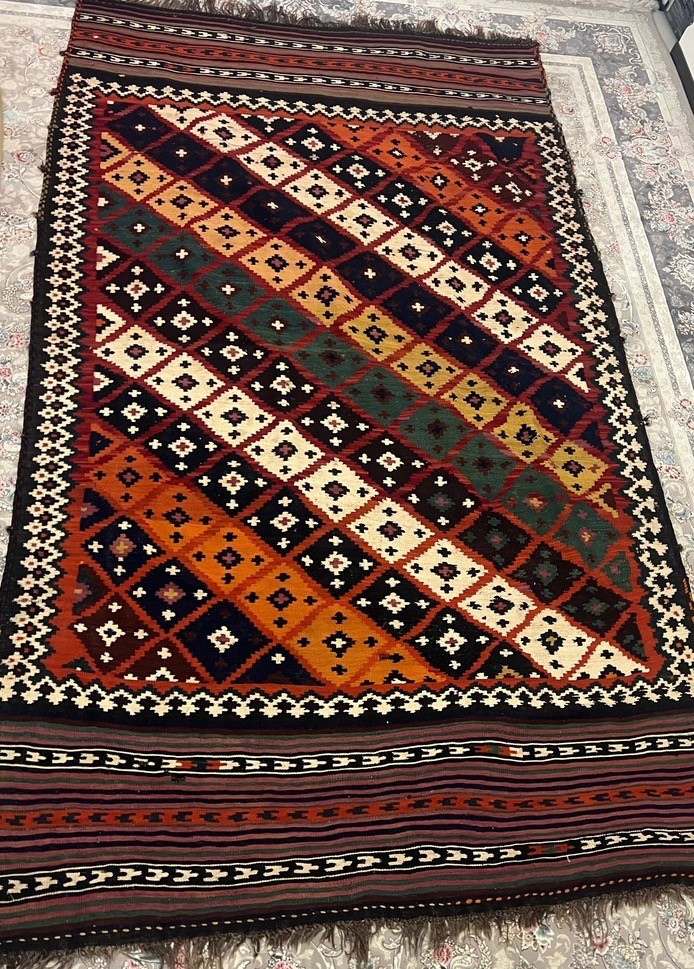#gelim #gelim_bafi #dast_baf #گلیم_بافی #گلیم
The First Lullabies of a Qajar Mother
This is not my story, it is the story of this kilim, a story whose weaver, around 1861 AC to 1871 AC, invested his life in the knots of this kilim so that it would remain a memory for you and me. I have always felt indebted to the emotions of its weaver, because I wanted others to know what hopes and dreams were planted in every knot of this rug. Here it is—the story of a Qajar kilim:
Deep within history lies a kilim, each knot telling a tale of love and hope. This kilim was woven during the Qajar era by a woman named Zuleikha—a mother who, in the springtime of her daughter Shahrbanoo’s life, decided to create a keepsake for her future. The wool of sheep, once a gift from Zuleikha’s own mother, was dyed with natural colors—pomegranate rind, walnut husk, and more—and came to life in the warp and weft of this kilim.
It took five years for Zuleikha’s hands, between lullabies and household chores, to complete these patterns. She wished to present her daughter, on her wedding night, with a gift that was not merely a carpet to walk upon, but a fabric filled with prayers, dreams, and a mother’s love to carry her through life.
Years passed, Shahrbanoo grew up, and fate brought her to marry my grandfather. Their life together, marked by loyalty, lasted thirty years, though sadly they never had children. Despite much insistence, my modest and noble grandfather refused to remarry, remaining faithful to her until the end. After Shahrbanoo’s passing, the kilim came into my grandmother’s care, and today it rests in our home.
When I look at it, I see more than patterns and colors; I hear Zuleikha’s lullabies, I feel her hopes, and I know this kilim is far more than a handwoven rug. It is a living keepsake of a love that was kindled in the heart of a young mother nearly one hundred and seventy years ago.
